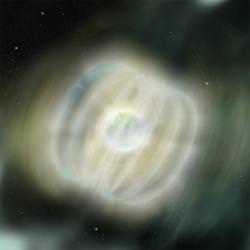 Gamma ray bursts are some of the most energetic events in the Universe. Even more amazing is just how quickly it all unfolds. One moment, everything’s quiet. A moment later, there’s a tremendous explosion that we can see from billions of light years away. And just seconds later, it’s gone again – the afterglow will be around for a few days, but that’s it. Astronomers and spacecraft have only a few seconds to a few minutes to find the explosion and study it before it fades away.
Gamma ray bursts are some of the most energetic events in the Universe. Even more amazing is just how quickly it all unfolds. One moment, everything’s quiet. A moment later, there’s a tremendous explosion that we can see from billions of light years away. And just seconds later, it’s gone again – the afterglow will be around for a few days, but that’s it. Astronomers and spacecraft have only a few seconds to a few minutes to find the explosion and study it before it fades away.
But a recent burst started off so bright, and faded so slowly, that astronomers were able to study it for months. The burst is called GRB 060729, and it was first discovered on July 29, 2006 by NASA’s Swift Satellite. Since it lasted so long, astronomers think the initial explosion might have been receiving continuous amounts of energy from some other source.
One possibility is a magnetar; a neutron star with an ultra-powerful magnetic field. The magnetic field acts as a brake, forcing the star to slow down, and transfers energy into the gamma ray burst explosion. This energy could keep the afterglow going for weeks and months.
Original Source: NASA News Release
